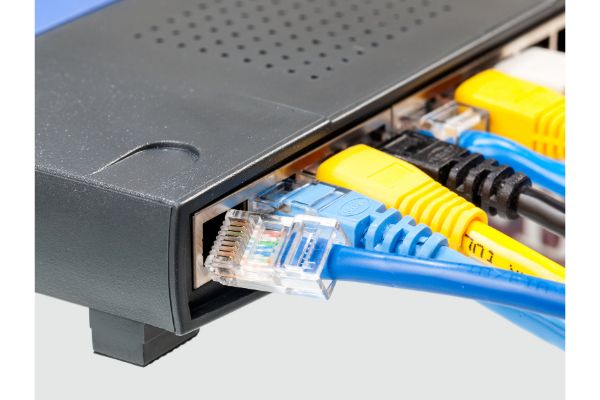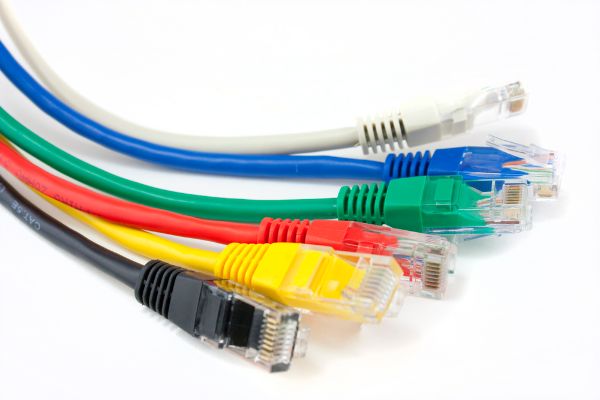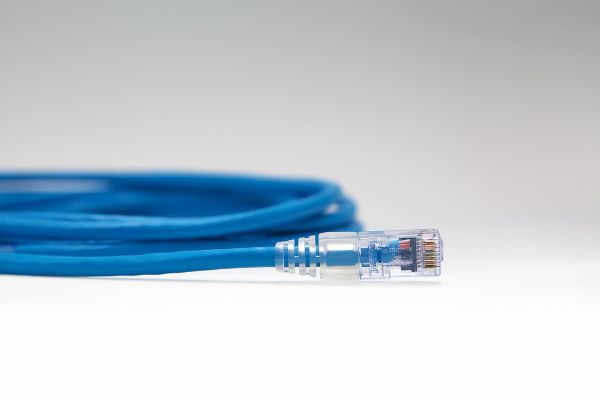Disclaimer: This post may contain affiliate links, meaning we get a small commission if you make a purchase through our links, at no cost to you. For more information, please visit our Disclaimer Page.
When you’re shopping for Ethernet cables, it can be tough to figure out which ones you need and how much you should spend on them. With all of the different types of cables and connectors available, it’s hard to know what’s best for your needs.
In this blog post, we’ll dispel some myths about Ethernet cables and help you make an informed purchase. We’ll also discuss why some cables are more expensive than others, and whether it’s worth spending the extra money.
Table of Contents
Which Ethernet Cable Do You Need?
An Ethernet cable is a type of network cable that is used to connect devices like computers, printers, and routers.
There are several different types of Ethernet cables available, including Cat-rated cables, shielded twisted pair (STP), and unshielded twisted pair (UTP).
The most common type of Ethernet cable is the Cat-rated cable. Cat cables are named after their category rating, which is a measure of the maximum speed, bandwidth, and distance the cable can support.
The higher the category rating, the faster the cable can transfer data.
Common installations like home and office networks usually don’t require the highest category cable. Cat5e and Cat6a cables are usually more than adequate for most needs.
Cat5e cables are commonly used in home networks.
However, if you’re setting up a high-speed network or need to run the cable over long distances, you’ll need to use a higher Cat-rated cable.
Which type of Ethernet cable you need will depend on your needs and the type of network you’re setting up.
Why Are some Ethernet Cables so Expensive?
There are many factors contributing to the high cost of an Ethernet cable such as category rating, quality, type, shielded vs unshielded and much more.
This question can be answered in depth in the following section.
10 Factors Contributing to the Cost of an Ethernet Cable
Ethernet cables have to meet certain performance standards, and the more complex the design of the cable, the more expensive it will be to produce.
The following are some possible reasons:
Construction Quality
Cheap Ethernet cables may not be built as well as more expensive models, which could lead to a higher rate of packet loss. In addition, cables that are tightly bound and shielded can be more expensive to produce.
Certification
Ethernet cables may also be more expensive if they have been certified for use in specific applications, such as data centers or medical facilities.
The Type and Quality of Insulation
The type and quality of insulation used in an Ethernet cable can also affect its price.
More expensive cables typically use better insulation, which can help to prevent signal loss and ensure faster data transmission speeds.
Different insulation materials also have different levels of durability, so a more expensive cable may be able to withstand wear and tear better than a less expensive one.
The Type of Jacket
The jacket is the outer sheath of the cable and it also affects the price. The harder and thicker the jacket, the more expensive the cable will be.
A good quality jacket will protect the wires from being damaged and will also resist moisture and other environmental factors.
The Type and Size of Wires Used
The cost of the ethernet cable is not only based on the brand name or type of cable, but also on the size and quality of the wires used. The thicker the wire, the more expensive the cable will be.
The AWG (American Wire Gauge) standard is used to measure the thickness of wires. The higher the AWG number, the thinner the wire. Ethernet cables can have an AWG rating as low as 18 or as high as 28.
The type of copper used in the wiring also affects the price. Pure copper is more expensive than copper-clad aluminum (CCA), so cables with pure copper wiring will be more expensive.
The Quality of the Connectors
The quality and cost of materials used in an Ethernet cable will determine its cost.
The most expensive cables use gold-plated connectors. While this may not make a difference to the performance of the cable, it can make a big difference when it comes to durability and lifespan.
More expensive cables typically use connectors made from higher-quality materials, and they may also be more securely attached to the cable itself.
The Manufacturing Process
The cost of an Ethernet Cable is largely determined by its manufacturing process.
The more complex the process, the more expensive the materials needed, and thus the higher the cost of the cable.
There are a variety of manufacturing processes used to create Ethernet cables, but all share some common steps:
- First, the conductor must be created. This is usually done with copper wire, which is then twisted into a cable.
- The conductor is then sheathed in either a plastic or metal jacket.
- Finally, the connectors are attached, and the cable is ready for sale.
The materials used in the manufacturing process also play a role in the cost of Ethernet cables. For instance, gold is often used as a connector because it is a good conductor of electricity and does not corrode. This increases the cost of the cable.
The type of connector also affects the price. RJ45 connectors are common in Ethernet cables, and they are relatively cheap to produce.
However, other types of connectors, such as SC connectors, can be more expensive because they require more complex manufacturing processes.
The Length of the Cable
Another major factor that affects the cost of Ethernet cables is the length of the cable. The longer the cable, the more materials are needed, and thus the higher the cost.
This is because the copper wire has a certain resistance per foot, so adding more feet to a cable will increase the overall resistance and require more copper.
Number of Shielding Layers
Ethernet cables can be shielded or unshielded. Shielding helps protect the cable from interference and makes it less susceptible to electromagnetic radiation.
It also increases the cost of the cable. Cables with more shielding layers tend to be more expensive than those with fewer layers.
Special Features
Some cables come with specialized features, such as connectors that can reduce electromagnetic interference (EMI). These features can add to the cost of the cable.
All of these factors can contribute to the overall quality and cost of an Ethernet cable. While there are many cheap options available, it is often worth spending a bit more for a high-quality cable that will perform better and last longer.
While there are many factors that can contribute to the cost of an Ethernet cable, the quality of construction and materials used are often the most important.
When shopping for a new cable, it is important to consider these factors in order to get the best possible value for your money.
Always choose a cable that is of the appropriate length and has the shielding you need to ensure optimal performance. And if you’re looking for the very best, consider a cable with gold-plated connectors and pure copper wiring.
Does it matter if you buy a cheap Ethernet cable?
It can be tempting to buy the cheapest Ethernet cable you can find, but there are some reasons why you may want to invest in a better quality cable.
The quality of the ethernet cable you need depends on the type of network you have. You should use a high-quality, durable cable for networks that need to handle a lot of traffic, like corporate or industrial settings.
For home and small office networks, you can usually get away with using a less expensive cable. However, if you are having problems with your network connection, it may be caused by a bad Ethernet cable. Here, upgrading to a better quality cable may help solve the problem.
Cheap cables may not have the same level of protection against interference and could cause packet loss. They may also not be as durable and could break easily.
Do Expensive Ethernet Cables Make a difference?
If you need a reliable connection for your business or home network, it’s worth spending a bit more on a good-quality Ethernet cable. Expensive cables are less prone to interferance and can improve performance.
Manufacturers of cheaper cables tend to use copper-clad aluminum (CCA) to save money on costs.
This makes it likely to break faster than ethernet cables without CCA. When shopping for a quality cable, make sure they do not have copper-clad aluminum wires.
Cheaper cables also are likely to be unshielded (this makes it cheaper to make), which will cause the cables to more susceptile to interference.
However, if you’re just using your Ethernet cable for occasional browsing or streaming, a cheap cable will do the job. Just make sure it’s long enough to reach from your device to the router.
Can a Bad Ethernet Cable Cause Packet Loss?
A bad Ethernet cable can certainly cause packet loss, which will impact your network’s performance. In some cases, a bad cable can even damage your equipment.
So it’s always important to make sure you’re using quality cables for your Ethernet connections.
A few reasons for packet loss can be:
- Bad electrical connection
- Poor insulation resulting in crosstalk or noise interference
- Damage to the cable jacket or wiring
- Broken wires inside the cable
The Bottom Line
While you don’t need to spend a fortune on Ethernet cables, it’s important to choose quality cables that will meet your needs.
Cheaper cables may not perform as well, and could even damage your equipment.
If you’re looking for a high-quality cable that will deliver the best performance possible, be prepared to pay a bit more. But it’s definitely worth it in the long run!



